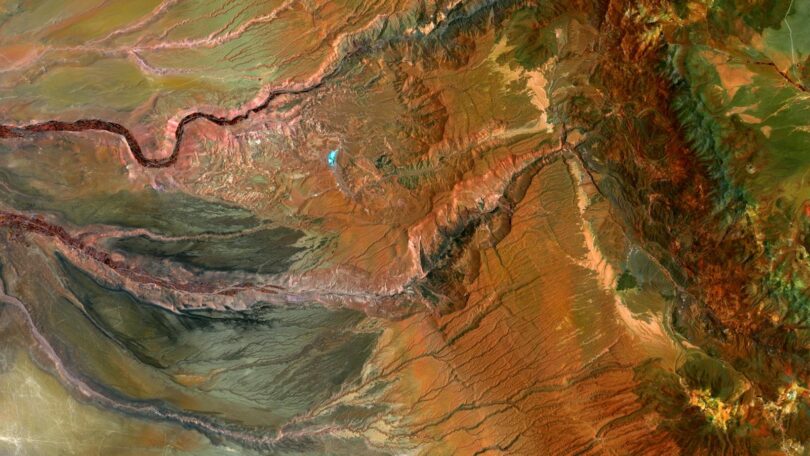Typography has played a crucial role in shaping the way we communicate visually throughout history. This critical review delves into the evolution of typography, examining its impact on art, culture, and design. From ancient calligraphy to digital typefaces, this article explores the historical journey of typography and its enduring significance in visual communication.
1. Understanding the Origins and Evolution of Typography
Typography’s historical journey is a complex tapestry woven with influences from various cultures, periods, and technological advancements. From the ancient civilizations carving inscriptions on stone tablets to the intricate scripts of illuminated manuscripts in the medieval era, typography has continuously evolved. The development of movable type by Johannes Gutenberg in the 15th century revolutionized the way information was disseminated, laying the foundation for modern typography.
The Renaissance era witnessed a surge in typographic innovations, with the introduction of roman typefaces and the development of italic styles. This period marked a departure from the heavy Gothic scripts prevalent earlier, showcasing a more refined and elegant approach to typography. The Industrial Revolution further propelled typography, with the rise of mechanized typesetting techniques like linotype and monotype, streamlining the printing process and increasing efficiency.
As we navigate the digital age, technology has transformed typography once again, with the emergence of digital fonts and variable typefaces. Designers now have endless possibilities at their fingertips, pushing the boundaries of creativity in typography. Looking ahead, it is crucial to embrace new technologies while preserving the timeless principles of typography, ensuring its relevance and impact in the future.
2. The Renaissance Era: A Breakthrough in Typographic Innovations
The Renaissance era marked a significant turning point in the history of typography, with groundbreaking innovations that transformed the way text was presented and consumed. One of the most notable advancements during this time was the development of movable type, credited to Johannes Gutenberg. This revolutionary technique allowed for the mass production of books, making knowledge more accessible to the masses.
Additionally, the Renaissance saw a shift towards more ornate and decorative typefaces, influenced by the art and architecture of the period. Typeface designers began experimenting with different styles and flourishes, leading to a diverse range of typographic options. The emphasis on clarity and readability also became more prominent, with typographers striving to create designs that were both aesthetically pleasing and easy to read.
Overall, the Renaissance era played a crucial role in shaping the typography we see today. Its innovative techniques and designs laid the foundation for future developments in the field, setting a standard for creativity and craftsmanship that continues to inspire typographers around the world.
3. Typography in the Industrial Revolution: The Rise of Mechanized Typesetting
The Industrial Revolution marked a significant shift in the world of typography with the emergence of mechanized typesetting. This period saw the rise of technologies such as the Linotype machine, which revolutionized the printing industry by allowing for faster and more efficient typesetting processes. The introduction of these machines brought about a new era of mass production, making printed materials more accessible and affordable than ever before.
Key developments during the Industrial Revolution include:
- The invention of the Linotype machine by Ottmar Mergenthaler in 1884
- The widespread adoption of mechanized typesetting in printing houses
- The increased speed and accuracy of typesetting processes
- The standardization of typefaces and fonts for mass production
As the Industrial Revolution propelled typography into a new era of innovation, it laid the groundwork for the modern printing industry we know today. The rise of mechanized typesetting not only transformed the way information was disseminated but also paved the way for further advancements in technology and design.
4. The Digital Age: How Technology Revolutionized Typography
The emergence of the digital age has brought about a significant revolution in the world of typography. With the introduction of computers, graphic design software, and digital publishing tools, the way we create and consume typography has drastically changed. This technological advancement has allowed for greater flexibility, efficiency, and creativity in typographic design and layout.
One of the most notable impacts of the digital age on typography is the shift towards web typography. With the rise of the internet and mobile devices, designers now have to consider how typography will appear across different screen sizes and resolutions. This has led to the development of responsive typography techniques, ensuring that text remains readable and visually pleasing on various digital platforms.
Furthermore, the digital age has also enabled the democratization of typography, with easily accessible design tools allowing individuals without formal design training to experiment with different fonts and layouts. This has led to a more diverse and dynamic typographic landscape, with a multitude of styles and aesthetics to choose from.
5. Future Perspectives: Recommendations for Using and Evolving Typography Today
In order to effectively utilize typography in today’s digital age, it is crucial to embrace a user-centric approach. Designers must prioritize readability and accessibility, ensuring that the chosen typefaces and layout enhance rather than detract from the content. Additionally, incorporating responsive design principles will allow for seamless transition across various devices, catering to the diverse needs of modern audiences.
Embracing innovation while respecting traditional typographic principles is key to evolving typography today. Experimenting with new typefaces, color palettes, and design techniques can push boundaries and spark creativity. However, it is essential to maintain a balance between experimentation and usability, always considering the end-user experience. Furthermore, leveraging emerging technologies such as variable fonts and augmented reality can open up new possibilities for dynamic and interactive typography that engages and captivates audiences in novel ways.
To Conclude
In conclusion, the historical journey of typography has played a crucial role in shaping the way we communicate and understand written language. Through centuries of development, typography has evolved from simple handwritten scripts to sophisticated digital fonts, reflecting the cultural, social, and technological advancements of the time. This critical review highlights the significance of typography in our lives and emphasizes the need for continued study and appreciation of this unique art form.
References/Sources:
- Lupton, Ellen. “Thinking with Type: A Critical Guide for Designers, Writers, Editors, & Students.” Princeton Architectural Press, 2010.
- Bringhurst, Robert. ”The Elements of Typographic Style.” Hartley & Marks Publishers, 1992.
- Carter, Sebastian. “Twentieth Century Type Designers.” Lund Humphries Publishers, 2002.








Leave a Comment